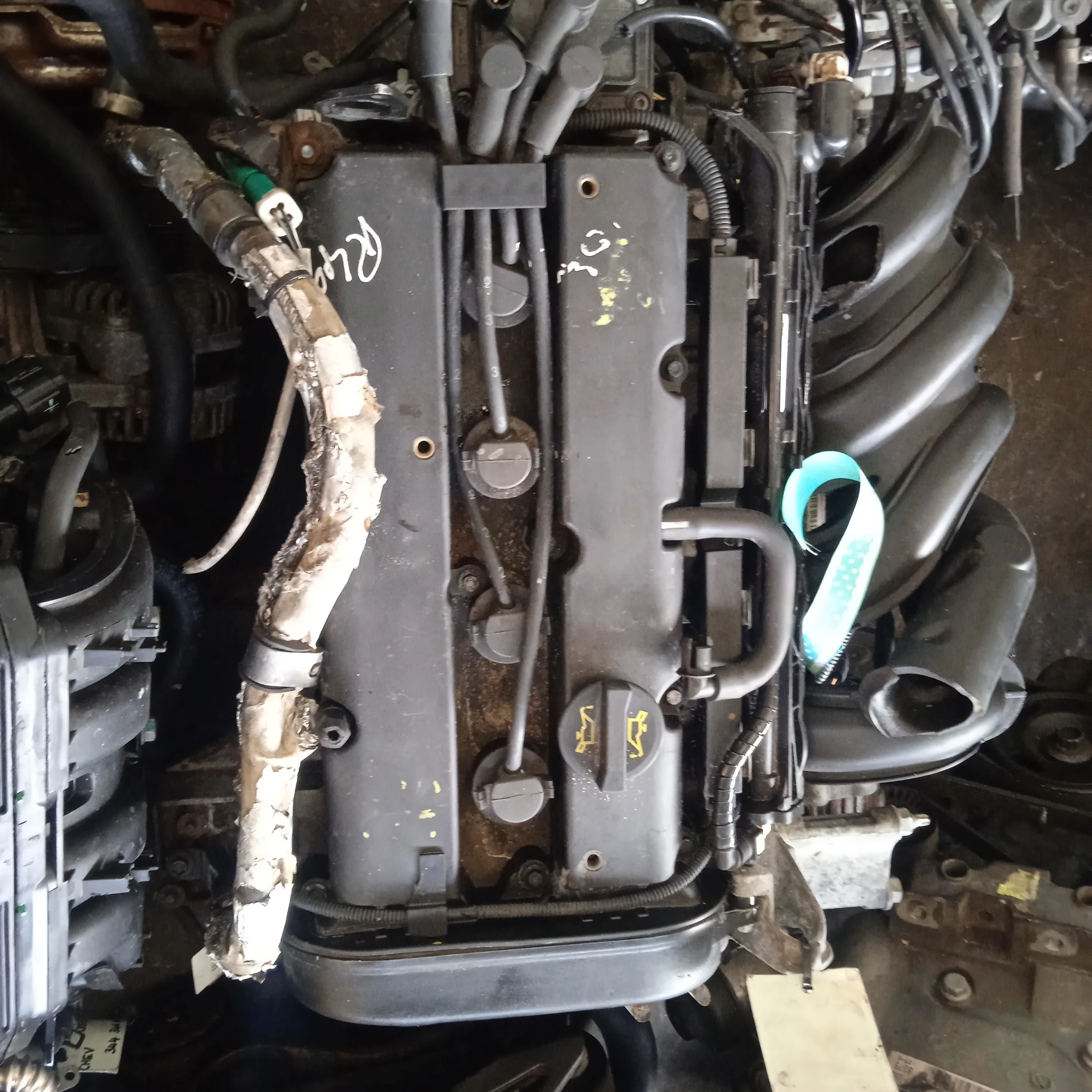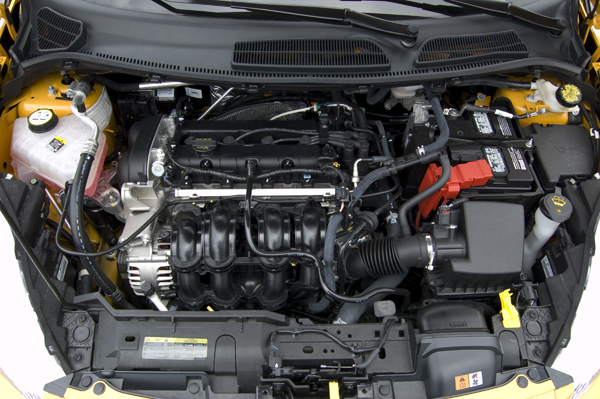Troubleshooting Ford Fiesta Engine Problems: What You Need to Know
Troubleshooting Ford Fiesta Engine Problems: What You Need to Know
Blog Article
The Future of Engines: Advancements Driving Lasting Power Solutions
As the automotive market navigates the necessary transition towards sustainability, the future of engines is significantly specified by groundbreaking developments. Electric engine improvements, together with promising advancements in hydrogen fuel cells and biofuels, are improving the landscape of power services.
Electric Engine Advancement
The development of electric engine advancements represents an essential change in the auto and aerospace markets, driven by the urgent need for lasting choices to fossil gas. This change is defined by considerable innovations in battery modern technology, power electronic devices, and electric motor layout, which jointly improve the effectiveness and performance of electric engines.
Current technologies have resulted in the development of lighter, a lot more energy-dense batteries, such as lithium-silicon and solid-state batteries, which guarantee longer varieties and much shorter billing times. Furthermore, improvements in electric motor performance, such as the usage of irreversible magnets and progressed cooling systems, enable electric engines to run properly under varying conditions. These improvements not only improve lorry efficiency however likewise add to a reduction in total power consumption.
Moreover, the assimilation of advanced software formulas has enhanced energy monitoring in electric cars, allowing for regenerative braking and predictive charging techniques. As producers progressively welcome electrical propulsion, the auto and aerospace industries are observing a paradigm shift in the direction of greener innovations. This evolution not just satisfies regulative needs yet also aligns with customer choices for ecologically pleasant transport options, solidifying electrical engines as a foundation of future lasting movement.
Developments in Biofuels
As the aerospace and automotive markets significantly focus on lasting energy resources, improvements in biofuels become a corresponding option to electrical engines. Biofuels, derived from organic products such as plants, waste, and algae, present an innovative opportunity for minimizing greenhouse gas exhausts and reliance on fossil gas.
Current study has concentrated on enhancing the performance and sustainability of biofuel manufacturing. Second-generation biofuels utilize non-food feedstocks, lessening competition with food supply and reducing ecological effect. Developments in synthetic biology have actually enabled the engineering of bacteria to produce biofuels much more effectively, leading to greater yields and lower manufacturing prices.
In addition, the development of drop-in biofuels enables seamless combination into existing infrastructure, enabling a smoother shift for sectors commonly reliant on fossil fuels. ford fiesta engine. These fuels can be used in existing engines without adjustments, facilitating their adoption throughout various sectors
Investments in biofuel modern technology, in addition to helpful policies, are vital to drive technology and scalability. As the worldwide community looks for to deal with climate adjustment, biofuels supply a practical, immediate remedy that straightens with the overarching objective of sustainability in transportation and aviation.
Hydrogen Gas Cell Innovation
An expanding number of researchers and companies are exploring hydrogen gas cell modern technology as a practical choice to standard power sources in transport and energy systems. This modern technology transforms chemical energy from hydrogen right into power through an electrochemical response, with water as the only byproduct, making it an eco-friendly option.
The core of hydrogen fuel cells is the gas cell pile, where hydrogen molecules are divided right into electrons and protons. The flow of electrons produces electricity, while protons move with a membrane to combine with oxygen from the air, forming water. This procedure leads to high efficiency and low emissions, placing hydrogen gas cells as an essential player in the change to lasting energy.
Considerable innovations have actually been made in improving the longevity and efficiency of fuel cells, together with lowering expenses via ingenious manufacturing methods. The growth of hydrogen manufacturing methods, such as electrolysis powered i loved this by renewable energy sources, enhances the sustainability of the overall system. As facilities for hydrogen refueling expands and manufacturing approaches become much more reliable, hydrogen fuel cell technology holds excellent guarantee for decarbonizing different markets, including durable transportation and fixed power generation.
Crossbreed Equipments and Their Influence
Hybrid systems represent a significant development in lasting engine technology, merging traditional internal burning engines with electric propulsion to enhance power performance and minimize exhausts (ford fiesta engine). This double technique allows automobiles to utilize both power resources, allowing higher flexibility in power intake and lowering dependence on nonrenewable fuel sources

Along with environmental advantages, crossbreed systems use consumers a practical transition in the direction of completely electrical automobiles. They alleviate array stress and anxiety by combining the comfort of fuel with the benefits of electrical propulsion, making them an appealing option for a broader audience. As suppliers purchase hybrid modern technology, the advancement of advanced battery systems and lightweight materials proceeds to improve efficiency. Generally, hybrid systems represent a critical action towards attaining lasting transportation and dealing with the urgent requirement for eco friendly power options.
The Role of AI in Engine Layout
Leveraging sophisticated algorithms and maker knowing methods, the automotive industry is progressively integrating artificial intelligence (AI) into engine style processes. AI improves the performance and performance of design by evaluating huge datasets to identify optimal setups and efficiency criteria. This capability permits engineers to simulate different operating conditions and anticipate engine habits under numerous scenarios, dramatically reducing the time and cost related to traditional prototyping approaches.
In addition, AI promotes the advancement of sophisticated products and burning processes customized for sustainability. By maximizing fuel efficiency and decreasing exhausts, AI-driven designs align with worldwide initiatives focused on reducing the carbon impact of auto engines. Equipment discovering algorithms can additionally anticipate maintenance requirements, causing boosted dependability and durability of engine components.
Moreover, AI is critical in the combination of electrification technologies, such as crossbreed systems, where it can enhance battery monitoring and power recuperation processes. As the sector relocates towards even more lasting power services, the function of AI in engine design comes to be progressively crucial, driving development and click for source boosting the performance of future engines. Ultimately, the cooperation between AI and engine layout advertises a new period of smarter, cleaner, and a lot more reliable automobile modern technologies.

Verdict
In conclusion, the future of engines is being shaped by a merging of cutting-edge technologies that prioritize sustainability. Electric engine improvements, biofuel growths, hydrogen gas cells, and hybrid systems jointly add to a significant reduction in emissions and ecological influence. In addition, the integration of expert system in engine layout improves effectiveness and efficiency. These transformative options underscore a dedication to producing a cleaner, extra sustainable vehicle landscape, inevitably profiting both society and the setting.
Electric recommended you read engine improvements, together with promising developments in hydrogen fuel cells and biofuels, are improving the landscape of power remedies. In addition, renovations in electrical motor effectiveness, such as the use of permanent magnets and progressed cooling down systems, make it possible for electric engines to operate efficiently under differing problems. By maximizing gas efficiency and reducing discharges, AI-driven layouts straighten with international campaigns intended at reducing the carbon impact of automotive engines. As the market moves in the direction of more lasting power services, the duty of AI in engine style becomes significantly important, driving innovation and improving the performance of future engines. Electric engine advancements, biofuel growths, hydrogen fuel cells, and crossbreed systems collectively add to a significant decrease in discharges and environmental influence.
Report this page